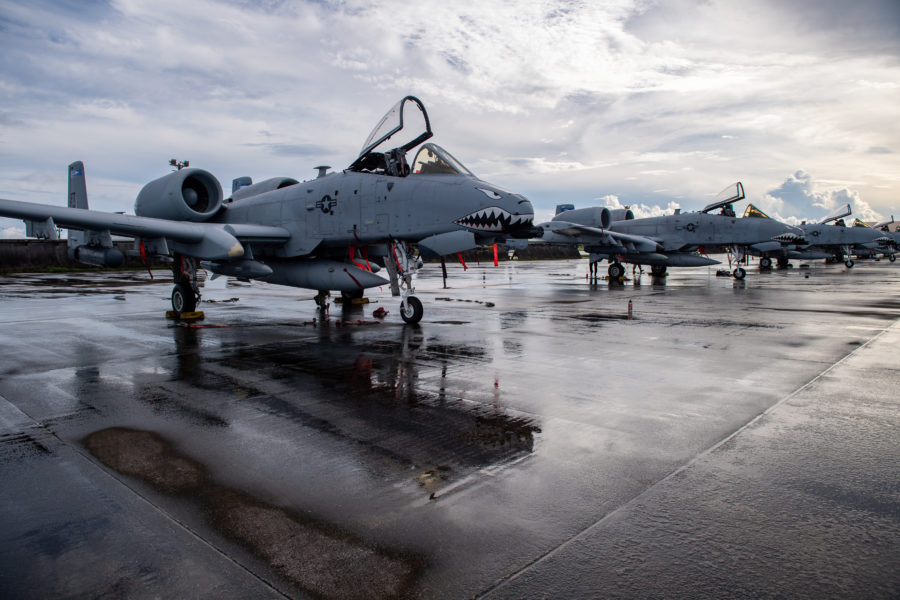Time appears to be running out for the A-10—the Senate Armed Services Committee (SASC) announced June 23 that it will allow the Air Force to retire 42 A-10s as part of its 2024 National Defense Authorization Act, approved this week.
The Senate panel’s decision follows on a similar one by the House Armed Services Committee, indicating that lawmakers are prepared to let the A-10 go after years of defending the venerable close air support aircraft from divestment.
One platform it appears the committee is still not ready to let go is the F-22, despite the Air Force once again requesting to to divest 33 older Raptors.
Unlike their House counterparts, lawmakers on the Senate committee consider their version of the NDAA in secret. While they released a 34-page summary of the bill, they have yet to release the full text.
The summary states that the NDAA “reduces the total number of fighter aircraft the Air Force is required to maintain from 1,145 to 1,112.” While that reduction matches the number of F-22s the Air Force wants to divest, the law currently on the books states that the service specifically has to maintain 1,145 combat-coded fighters. The 33 Block 20 F-22s the Air Force wants to divest are not combat-coded but instead used for training.
Meanwhile, the SASC’s bill summary does not mention the F-22 specifically in any capacity—suggesting that a provision in last year’s bill prohibiting the retirement of any F-22s is still in place.
A SASC staffer said the reduction language in the summary doesn’t refer to the F-22s but acknowledged the discrepancy and said it may be clarified in the full mark. He also suggested the A-10 reduction would only affect the Air National Guard.
The committee also wants to block the Air Force from retiring any RQ-4 Block 40 aircraft, which have been used as Battlefield Airborne Communications Node platforms.
On the procurement side of things, the markup summary says the committee approved the Air Force’s requests for new aircraft and munitions. The SASC also wants to increase funding for the Joint All-Domain Command and Control operational experimentation testbed and accelerate development of “semiautonomous adversary air platform” systems. The Air Force is pursuing such a program to develop a moderately stealthy platform for use in Aggressor-type activities.
Also funded is the development of a “next-generation unmanned aerial system distribution platform.”
On electronic warfare, the SASC requires “the designation of a Joint Electromagnetic Spectrum Operations Center at U.S. Strategic Command,” along with codification of the “Electronic Warfare Executive Committee.” The Pentagon will also have to “address deficiencies in the electronic protection of defense systems” and supply “an assessment of [DOD] ranges for Electromagnetic Warfare training.”
The draft NDAA would also require a number of briefings or reports from the Air Force, including:
- A briefing on how the Air Force will harvest and use parts from retired F-16s to keep later versions of the fighter in service.
- A briefing on the Air Force’s strategy for acquiring Collaborative Combat Aircraft, the autonomous unmanned “loyal wingmen” that will fly alongside crewed aircraft in future combat, including the service’s progress in acquiring and operating test aircraft; how it will assess CCA mission effectiveness, and how it will trade off missions between manned and unmanned systems.
- A report on how the Air Force will provide self-protection capabilities for aviation forces. The provision is similar to language included in the House bill which would require the Secretary of Defense to determine whether or not the Pentagon has enough resources and capabilities to defend its bases and deployed forces in the Indo-Pacific and Europe from “hypersonic-, ballistic-, cruise-missile and air attack.”
- A report on USAF’s overall plans to modernize the fighter force structure, also similar to a provision in the House bill.
- Periodic reports on the implementation of the Pentagon’s “electronic warfare strategy, plans and budgeting across the Department.”
